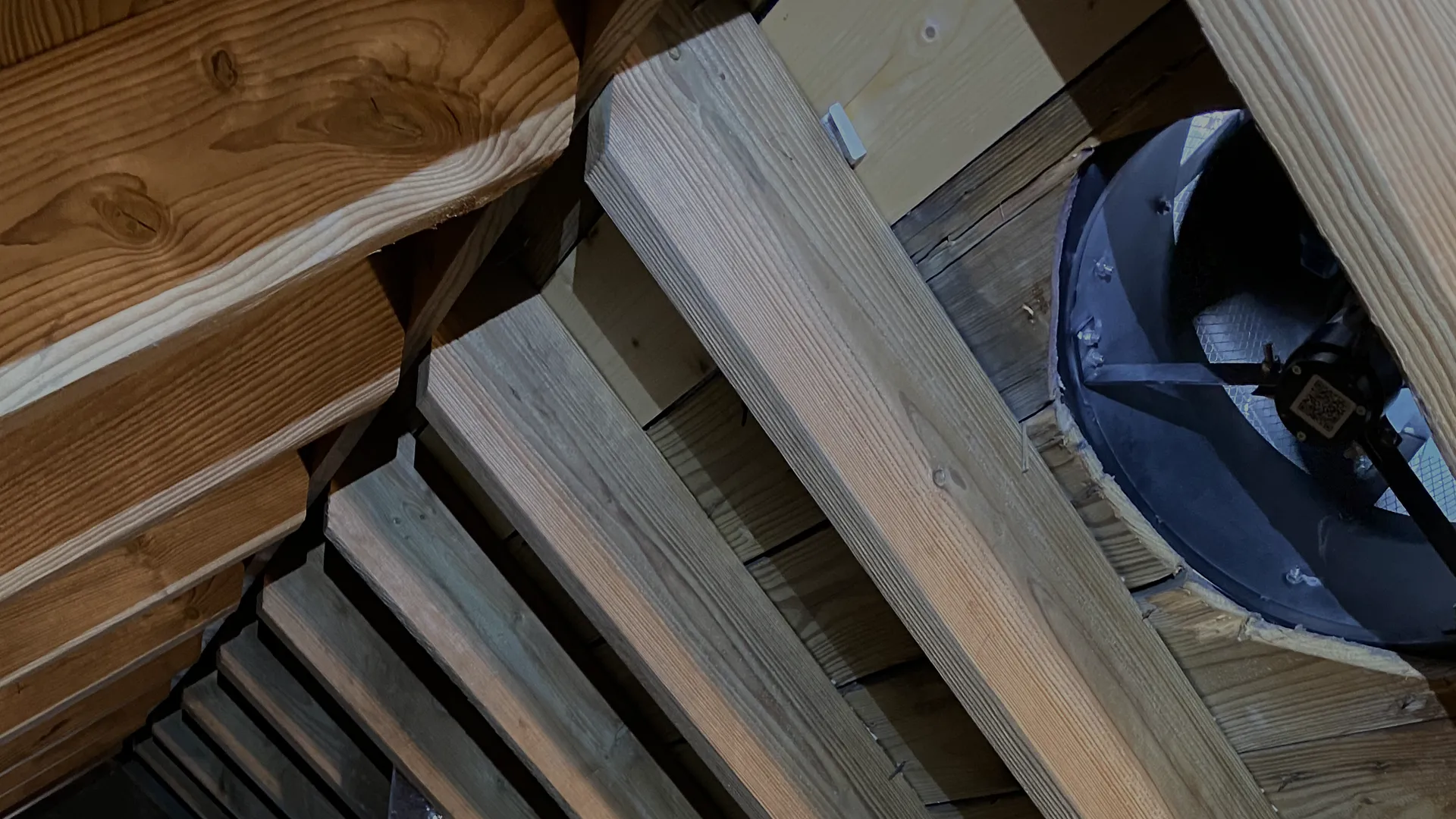
Attic Ventilation Contractor










Request a Quote Today


How to Properly Vent an Attic
2. Feel the ceiling. On a hot day, if the ceiling feels warm, then your attic is not properly vented. The heat from the attic is being transferred to the living space below, which can make your home uncomfortable and increase your energy bills.
3. Look for signs of moisture. If you see moisture on the rafters, insulation, or other surfaces in the attic, then this is a sign that your attic is not properly vented. Moisture can lead to mold growth, which can damage your home and your health.
4. Check for ice dams. In the winter, if you see ice dams forming on your gutters, this is a sign that your attic is not properly vented. Ice dams form when warm air from the living space below melts the snow on the roof, and then the melted snow refreezes on the eaves. This can damage your gutters and roof, and it can also lead to water leaks into your home.
5. Baffles: These are typically installed at the eaves to maintain a clear air path from the soffit vents into the attic. If you have insulation in your attic, make sure it's not blocking the soffit vents.


Proper home ventilation prevents condensation buildup
By implementing proper insulation and ventilation techniques, you can effectively reduce and prevent condensation buildup in your home.
This helps to prevent issues such as mold growth, water damage, and deteriorating indoor air quality.
Ventilation is crucial combined with solar fan and passive vents
If you have the option cross gable ventilation has a great performance track record. Cross gable ventilation provides the most efficient air flow and can also be utilized with a power vent at one end of the gable.
This is often see in grade level large scale parking garages to remove carbon dioxide from vehicle exhaust. Soffit vents can be replaced with low profile vents near the bottom of the roof if there are no overhangs for air intake.
Ventilation is crucial combined with solar fan and passive vents, the attic can remain as close to outside temperature as possible.

✓ Power Vents / Solar or electric
✓ Gable Vents
✓ Bath Fan / Kitchen Fan Exhaust Vents
✓ Fan Vents / Passive mushroom Vents / Roof vents
Optimal Ventilation Solutions for Improved Air Flow and Climate Control
With the addition of solar fans for fresh air intake and exhaust, you can enjoy a cooler and more comfortable living environment while reducing energy consumption. Trust our expertise in creating a well-ventilated home that promotes better air quality and temperature regulation throughout the year.
2a. Soffit Vents - Essential Rules for Optimal Performance
Ventilation from the soffits must serve some better purpose than to be trapped behind insulation or to be directed into the wrong areas of the attic with no air flow balance.
Air flow balance is essential to a healthy vented attic

2b. Soffit Ventilation / Baffles.
Lets be clear, the entire soffits is an air chute designed to pull air through each joist bay, not just where perforated soffits are present (which is every 4-8 ft) without air flow across the entire soffit the sheathing will not be optimally cooled.

3. Solar attic fan are active ventilation
Considerations for vents are calculations to determine the minimum required net free ventilating area (NFVA) using the 1:300 ratio or 1: 600 of upper attic area.
This is only possible when the soffits are open and baffles are properly installed to prevent insulation from clogging the soffits.
.webp)
4. Continuous Ridge Vent is installed at the top of the roof / ridge.
Continuous means end to end ventilation. Since air movement is the key to good ventilation, it must have an air intake source in order to be effective.
Most new re-roofs include the upgrade to continuous ridge vents but must take into account air movement / balance.

5. Passive vents are not to be confused with the need for active powered ventilation.
Passive vents are also outtake vents and are designed to allow warm air to escape naturally in summer, and prevent a moist environment in winter.
Passive vents are not to be confused with active powered ventilation. In each case, a vented attic must perform in conjunction with a completely sealed attic floor to prevent air intake from the conditioned living space.

6. Attic Solar Fan is the best way to generate fresh air intake and exhaust.
1. In a vented unconditioned attic you can never have too much ventilation; the goal of a vented attic is to keep the attic as close to exterior temperature as possible.
2. In a conditioned / semi-conditioned attic, keeping outside air from getting in is equally essential to the air quality and health of the organic building materials.
A Solar Attic Fan is the best way to generate fresh air intake and exhaust. It is powered by the sun and runs whenever there is direct sunlight, keeping your upstairs cooler in the summer.























.svg)
.svg)
.svg)
.svg)
.svg)
.svg)
.svg)
.svg)
.svg)
.svg)
.svg)
.svg)
.svg)
.svg)

.svg)
.svg)
.svg)
.svg)
-1.svg)
.svg)
.svg)















